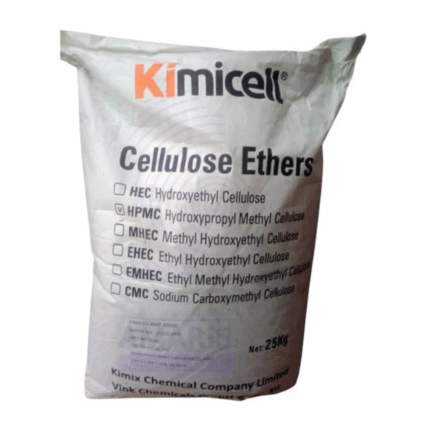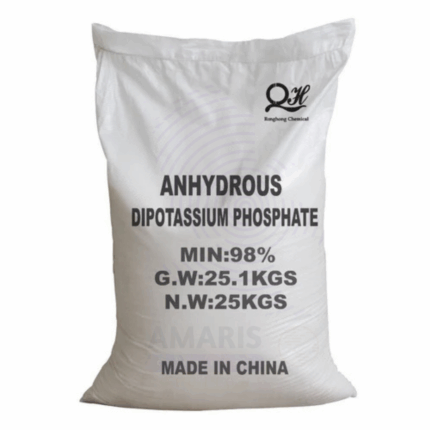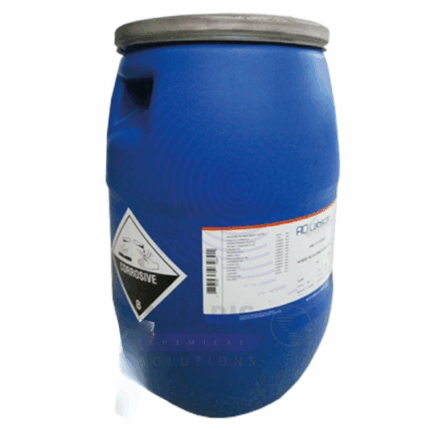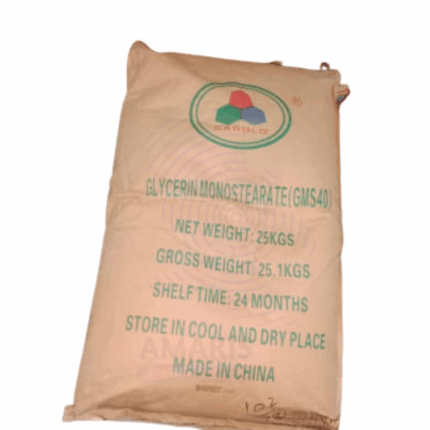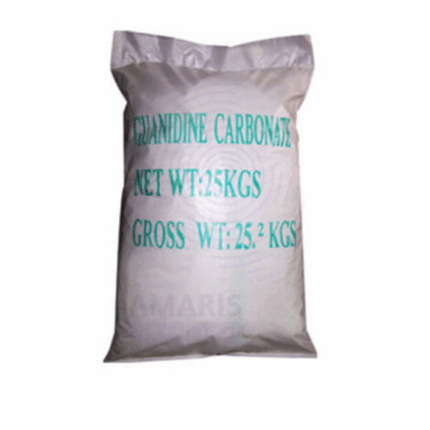Cellulose Acetate Phthalate (CAP)
Cellulose Acetate Phthalate (CAP) is a cellulose derivative obtained by esterification of cellulose with acetic acid and phthalic anhydride. It appears as a white to off-white, free-flowing powder that is insoluble in water but soluble in alkaline solutions and certain organic solvents. CAP is primarily used as an enteric coating agent in pharmaceutical formulations, providing resistance to acidic gastric fluids and enabling targeted release of drugs in the intestines. Due to its film-forming, pH-sensitive solubility, and protective properties, CAP is also applied in food, cosmetics, and specialty industrial uses.
Cellulose Acetate Phthalate (CAP) Uses
- Primary Uses
Pharmaceutical Industry
- Widely used as an enteric coating polymer for tablets and capsules to prevent dissolution in stomach acid and enable targeted release in the intestines.
- Provides protection for acid-sensitive drugs and reduces gastric irritation.
- Acts as a controlled-release film former in oral dosage forms.
Food Industry
- Used as a coating agent for confectionery and food products to provide gloss and protective barriers.
- Functions as a controlled-release matrix for flavor and nutrient encapsulation.
Cosmetics
- Employed in nail polish formulations and other cosmetics for film-forming and gloss-enhancing properties.
- Provides water-resistant coatings.
Secondary Uses
Packaging Industry
- Utilized in specialty coatings for biodegradable films and packaging materials for controlled permeability.
Adhesives & Sealants
- Applied as a component in water-resistant adhesives and sealants.
Printing Industry
Used in inks and coatings to improve film durability and chemical resistance.
- Basic Identification Attributes
- Chemical Name (IUPAC): Cellulose, acetate, phthalate
- Common/Trade Name: Cellulose Acetate Phthalate, CAP
- CAS Number: 9004-35-7
- HS Code: 3912.10.00
- Molecular Formula: Variable (cellulose backbone with acetate and phthalate ester substitutions)
- Synonyms:
- CAP
- Cellulose acetate phthalate polymer
- Phthalylated cellulose acetate
- Physical & Chemical Properties
- Physical State: White to off-white powder
- Color & Odor: White/off-white; virtually odorless
- Melting Point: Decomposes before melting
- Boiling Point: Not applicable
- Density: Approximately 1.3–1.4 g/cm³
- Solubility:
- Insoluble in water and gastric acid (pH <3)
- Soluble in alkaline conditions (pH >6)
- Soluble in acetone, ethanol, and certain organic solvents
- pH Sensitivity: Dissolves at intestinal pH (around 6.8 and above)
- Stability: Stable under dry, cool storage conditions; sensitive to strong acids and bases
- Safety & Hazard Attributes
- Hazard Class (GHS): Not classified as hazardous under normal use
- NFPA Ratings:
- Health: 0
- Flammability: 1 (combustible dust risk)
- Reactivity: 0
- Exposure Limits: No specific occupational exposure limits; general dust precautions advised
- Toxicity: Non-toxic; widely regarded as safe for pharmaceutical and food uses
- Reactivity: Stable under normal conditions; avoid strong oxidizers and acids
- Storage & Handling Attributes
- Storage Conditions: Store in a cool, dry place away from moisture and direct sunlight
- Container Type: Sealed, moisture-proof containers or bags (plastic or foil-lined)
- Shelf Life: Typically 2–3 years if stored properly
- Special Handling: Avoid dust generation and inhalation; use PPE when handling powders
- Regulatory & Compliance Attributes
- FDA Status: Approved as a pharmaceutical excipient and food additive in regulated uses
- REACH Status: Registered
- Transportation: Not regulated as hazardous material
- Waste Disposal: Dispose according to local regulations; biodegradable under industrial composting
- Environmental & Health Impact
- Ecotoxicity: Low environmental impact; biodegradable under aerobic conditions
- Persistence: Moderate biodegradability; slow in some conditions
- Bioaccumulation: Not expected to bioaccumulate
- Carcinogenicity/Mutagenicity: Not classified as carcinogenic or mutagenic
Biodegradability: Biodegradable, but may require controlled conditions
Safety Handling Precautions
Personal Protective Equipment (PPE):
- Dust mask or respirator for powder handling
- Safety goggles
- Gloves recommended
Handling Measures:
- Avoid dust formation and accumulation
- Use in well-ventilated areas
- Prevent contact with strong acids or oxidizers
Storage Measures:
- Keep containers tightly sealed and dry
- Store away from heat and ignition sources
Hygiene Practices:
- Wash hands after handling
- Avoid eating, drinking, or smoking while handling product
First Aid Measures
- Inhalation: Remove to fresh air; seek medical attention if irritation occurs
- Skin Contact: Wash with soap and water; seek medical advice if irritation persists
- Eye Contact: Flush with water for 15 minutes; seek medical attention if irritation continues
- Ingestion: Non-toxic; rinse mouth and seek medical advice if large quantities ingested
Firefighting Measures
- Fire Hazards: Combustible powder; may produce dust explosion hazard
- Extinguishing Media: Use water spray, foam, dry chemical, or CO₂
- Special Precautions: Avoid dust accumulation; firefighters should wear protective equipment and respiratory protection
- Decomposition Products: Carbon oxides, phthalic anhydride, and acetic acid vapors under thermal decomposition


 Preservatives(food)
Preservatives(food) Flavor Enhancers
Flavor Enhancers Acidulants
Acidulants Sweeteners
Sweeteners Antioxidants
Antioxidants Colorants(food)
Colorants(food) Nutraceutical Ingredients (food)
Nutraceutical Ingredients (food) Nutrient Supplements
Nutrient Supplements Emulsifiers
Emulsifiers
 Collectors
Collectors Dust Suppressants
Dust Suppressants Explosives and Blasting Agents
Explosives and Blasting Agents Flocculants and Coagulants
Flocculants and Coagulants Frothers
Frothers Leaching Agents
Leaching Agents pH Modifiers
pH Modifiers Precious Metal Extraction Agents
Precious Metal Extraction Agents
 Antioxidants(plastic)
Antioxidants(plastic) Colorants (Pigments, Dyes)
Colorants (Pigments, Dyes) Fillers and Reinforcements
Fillers and Reinforcements Flame Retardants
Flame Retardants Monomers
Monomers Plasticizers
Plasticizers Polymerization Initiators
Polymerization Initiators Stabilizers (UV, Heat)
Stabilizers (UV, Heat)
 Antifoaming Agents
Antifoaming Agents Chelating Agents
Chelating Agents Coagulants and Flocculants
Coagulants and Flocculants Corrosion Inhibitors
Corrosion Inhibitors Disinfectants and Biocides
Disinfectants and Biocides Oxidizing Agents
Oxidizing Agents pH Adjusters
pH Adjusters Scale Inhibitors( water)
Scale Inhibitors( water)
 Antioxidants(cosmetic)
Antioxidants(cosmetic) Emollients
Emollients Fragrances and Essential Oils
Fragrances and Essential Oils Humectants
Humectants Preservatives
Preservatives Surfactants(cosmetic)
Surfactants(cosmetic) Thickeners
Thickeners UV Filters
UV Filters
 Fertilizers
Fertilizers Soil Conditioners
Soil Conditioners Plant Growth Regulators
Plant Growth Regulators Animal Feed Additives
Animal Feed Additives Biostimulants
Biostimulants Pesticides (Herbicides, Insecticides, Fungicides)
Pesticides (Herbicides, Insecticides, Fungicides)
 Active Pharmaceutical Ingredients (APIs)
Active Pharmaceutical Ingredients (APIs) Excipients
Excipients Solvents(pharmaceutical)
Solvents(pharmaceutical) Antibiotics
Antibiotics Antiseptics and Disinfectants
Antiseptics and Disinfectants Vaccine Adjuvants
Vaccine Adjuvants Nutraceutical Ingredients (pharmaceutical)
Nutraceutical Ingredients (pharmaceutical) Analgesics & Antipyretics
Analgesics & Antipyretics
 Analytical Reagents
Analytical Reagents Solvents(lab)
Solvents(lab) Chromatography Chemicals
Chromatography Chemicals Spectroscopy Reagents
Spectroscopy Reagents microbiology-and-cell-culture-reagents
microbiology-and-cell-culture-reagents Molecular Biology Reagents
Molecular Biology Reagents Biochemical Reagents
Biochemical Reagents Inorganic and Organic Standards
Inorganic and Organic Standards Laboratory Safety Chemicals
Laboratory Safety Chemicals Specialty Laboratory Chemicals(Special Laboratory Equipment)
Specialty Laboratory Chemicals(Special Laboratory Equipment)
 Demulsifiers
Demulsifiers Hydraulic Fracturing Fluids
Hydraulic Fracturing Fluids Scale Inhibitors(oil)
Scale Inhibitors(oil) Surfactants(oil)
Surfactants(oil) Drilling Fluids
Drilling Fluids
 Dyes and Pigments
Dyes and Pigments Bleaching Agents
Bleaching Agents Softening Agents
Softening Agents Finishing Agents
Finishing Agents Antistatic Agents
Antistatic Agents
 Admixtures
Admixtures Waterproofing Agents
Waterproofing Agents Sealants and Adhesives
Sealants and Adhesives Curing Compounds
Curing Compounds Concrete Repair Chemicals
Concrete Repair Chemicals Anti-Corrosion Coatings
Anti-Corrosion Coatings
 Surfactants(cleaning)
Surfactants(cleaning) Builders
Builders Enzymes
Enzymes Solvents (Cleaning)
Solvents (Cleaning) Fragrances
Fragrances
 Electronic Chemicals
Electronic Chemicals Catalysts
Catalysts Lubricants
Lubricants Photographic Chemicals
Photographic Chemicals Refrigerants
Refrigerants Automotive chemicals
Automotive chemicals Pyrotechnic Chemicals
Pyrotechnic Chemicals
 Biodegradable Surfactants
Biodegradable Surfactants Bio-based Solvents
Bio-based Solvents Renewable Polymers
Renewable Polymers Carbon Capture Chemicals
Carbon Capture Chemicals Wastewater Treatment Chemicals
Wastewater Treatment Chemicals
 Pigments
Pigments Solvents(paint)
Solvents(paint) Specialty Coatings
Specialty Coatings Binders/Resins
Binders/Resins Additives
Additives Driers
Driers Anti-Corrosion Agents
Anti-Corrosion Agents Functional Coatings
Functional Coatings Application-Specific Coatings
Application-Specific Coatings
 Fresh Herbs
Fresh Herbs Ground Spices
Ground Spices Whole Spices
Whole Spices Spice Blends
Spice Blends Dried Herbs
Dried Herbs
 Leavening Agents
Leavening Agents Dough Conditioners
Dough Conditioners Flour Treatments
Flour Treatments Fat Replacers
Fat Replacers Decoratives
Decoratives Preservatives(baking)
Preservatives(baking)
 Plasticizers & Softeners
Plasticizers & Softeners Reinforcing Agents
Reinforcing Agents Adhesion Promoters
Adhesion Promoters Vulcanizing Agents
Vulcanizing Agents Antidegradants
Antidegradants Blowing Agents
Blowing Agents Fillers & Extenders
Fillers & Extenders Accelerators & Retarders
Accelerators & Retarders




